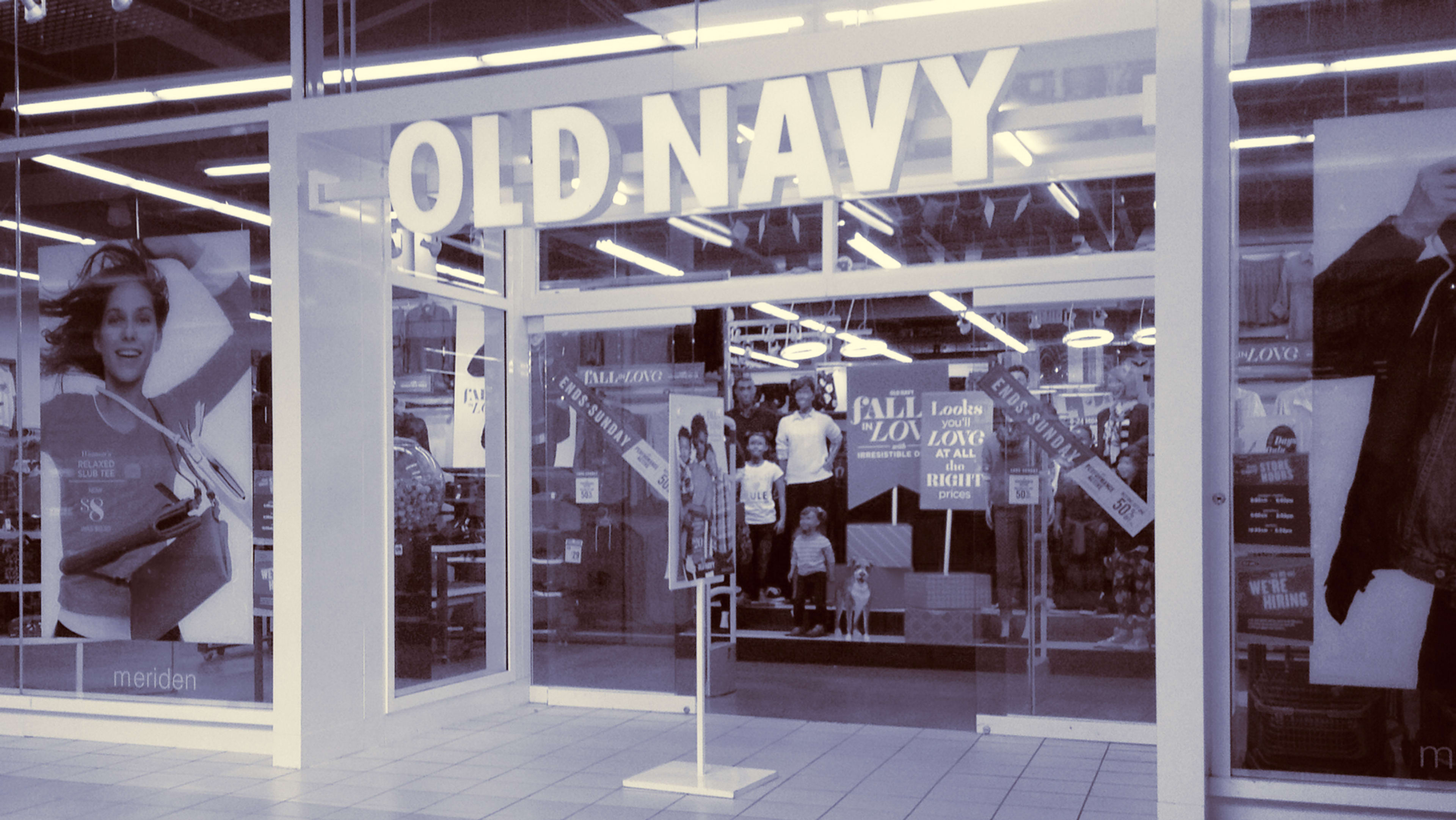The heritage apparel conglomerate Gap Inc.—which owns Gap, Banana Republic, Old Navy, Athleta, and Hill City—has been struggling to find its place in the modern retail landscape for some time. And in another sign of trouble, Gap Inc. just announced that it would be canceling its plan to spin off Old Navy—the one high-performing brand within its stable—into its own publicly traded company. It also said that Neil Fiske, the president and chief executive officer of the flagship Gap brand, would leave the company.
For the past five years, Gap Inc.’s growth has been in decline, largely thanks to poor sales at Gap and Banana Republic. This is partly because the brands have failed to create an aesthetic that is relevant to today’s consumers and because their large network of stores have suffered as foot traffic in malls has declined. But throughout all of this, the Old Navy brand—which is effectively a fast fashion brand on par with H&M—had been the bright spot at the company, generating revenues to the tune of $8 billion a year and pulling up the company’s overall sales.
In March 2019, Gap Inc. made the surprising announcement that it planned to spin off Old Navy into its own publicly traded company. When I wrote about this last year, I explained that this approach would allow Old Navy to continue its impressive growth trajectory without being weighed down by the other brands at the company. It would allow the other brands to slowly reposition themselves to thrive.
Those plans are now canceled. One reason for this is that Old Navy has seen a sudden decline in sales in recent quarters. Last August, for instance, Old Navy reported a 5% decline in same-store sales. This was disappointing news for Gap Inc., and clearly put its entire spinoff strategy into question. But more broadly, Old Navy’s decline is not that surprising giving the current retail climate. Old Navy is effectively a fast fashion brand: Consumers were drawn to the brand for its low prices, frequent sales, and trendy, of-the-moment clothes.
But fast fashion as a category is struggling, a trend partially driven by changing tastes. Consumers are becoming more eco-conscious, realizing that cheap, disposable clothing is terrible for the environment. European fast fashion brands H&M and Zara, whose sales growth have also slowed in recent years, have announced large-scale sustainability initiatives, partly to counter the notion that their manufacturing practices are bad for the planet. Forever 21, another American fast fashion retailer, has filed for bankruptcy protection.
The older brands within the Gap Inc. family were built for an earlier era, when consumers had different aesthetic sensibilities and expectations about sustainability. Old Navy, which first came to market in 1994, appeared to be weathering this transformation in consumer values, but it’s now clear that it will need to evolve to survive in the future.
Reached for comment, a Gap spokesperson directed us to its press release.
Recognize your brand’s excellence by applying to this year’s Brands That Matter Awards before the early-rate deadline, May 3.
